So many strains of social unease seemed to come to a head, at least for the time being, in 2017. Seismic shifts within the cultural paradigm of our nation have forced all of us to contend with ugly truths that have been normalized for far too long, most notably sexism permitted within institutions of power like the film industry. It is all the more unfortunate then that our collective sense of outrage and anger has seemingly consolidated the oppressive echo chambers we have erected for ourselves. I don’t think this sense of sociopolitical despair made existential was expressed more potently than when Agent Dale Cooper, one of the most confidently heroic figures in the last thirty years of visual media, ended his cross-country odyssey broken and bewildered, whispering to himself, “What year is this?”.
Anyone expecting Twin Peaks: The Return to appear on this list will be disappointed, but make no mistake; David Lynch and Mark Frost’s 18-part epic was one of the supreme achievements of the moving image this past year, regardless of whether you view it as television or film. Indeed, a balm in the midst of all the rampant discord in the world was a consistent display of bold experimentation across all visual platforms. So, as we find ourselves stumbling into the nascent months of this new, equally uncertain year, here are ten films that resonated with me most strongly in a year full of movies that sought to perform their roles as mediators of cultural discourse to breathtaking, magnificent, and often moving effect.
10. Ladybird
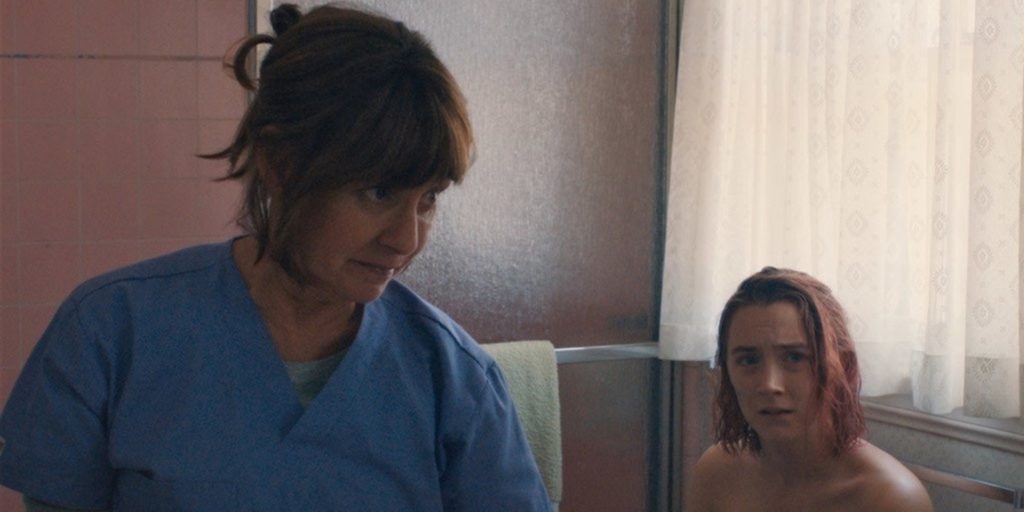
It’s difficult to think of a film from last year as devoid of cynicism as Ladybird. Greta Gerwig’s directorial debut expands upon some of the themes present in her work with Noah Baumbach, namely the formative years women undergo in relation to their cultural and class environment. By focusing primarily on Sacramento, circa 2002, this form of geographic and historical specificity contends with a heightened awareness on the part of the Gerwig’s heroine of rapid globalization, social mobility and western intervention in the Middle East. Above all, the joys of Ladybird lie in the simple observation of it’s marvelous cast. The characters who populate the cinematic snapshot of what the eponymous heroine snidely describes as “the Midwest of California” are all painted with complex, often conflicting shades. What other film could have taken a song by Dave Matthews and use it as both a punch-line and poignant affirmation of self? But Ladybird surpasses the basic requisites of its subgenre in its understanding, in the parlance of a nun who speaks with the film’s heroine, of the distinction between “love” and “attention”. The way those two intersect into an amorphous, messy, ultimately vital attribute of who we are and who we become is at the core of one of the most earnest American films of 2017.
9. Columbus
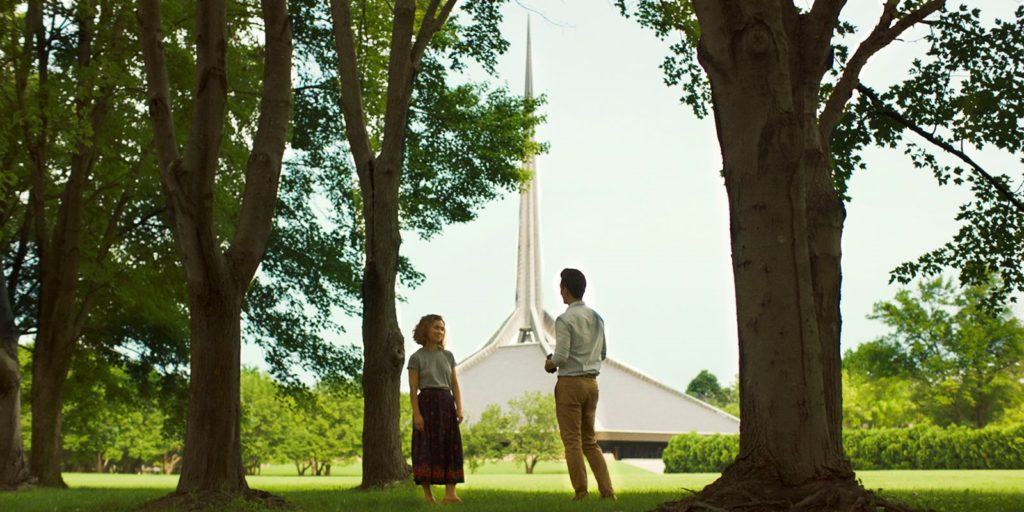
Something of a companion piece with the preceding film, the story of Columbus, which tells of a connection forged between a young man visiting his ailing father and a younger woman living in the city, has its cinematic antecedents in the works of the Japanese master Yasujiro Ozu. Plenty of trademarks of the director of Tokyo Story and Late Spring are present here, including formal static shots, cuts across the 180 degree line, and even a brief visual marker of a red tea kettle. Yet what makes the directorial debut of video essayist Kogonada (often stylized with two colons) stand out from mere mimicry or tribute is its fascination with the ways we cultivate our environments. Our two heroes become engaged in something that is far more complicated and, in many ways, intimate than a simple romance as they bond over the function, both aesthetic and social, of architecture. But more than an academic appreciation of the arts, Columbus is a quiet, patiently paced film about how such monuments, great and small, resonate with us on a deeply personal level. Neither of these characters provide complete solace or an absolute solution to the fears and doubts of the other. They simply bond and, without fully realizing it before it happens, irrevocably impact the lives of one another before they part. Like the bridges and buildings that dot the city, there’s something both fleeting yet lasting about the way these characters find one another. You don’t have to know Ozu to find that moving, though it certainly doesn’t hurt.
8. Three Billboards Outside Ebbing, Missouri
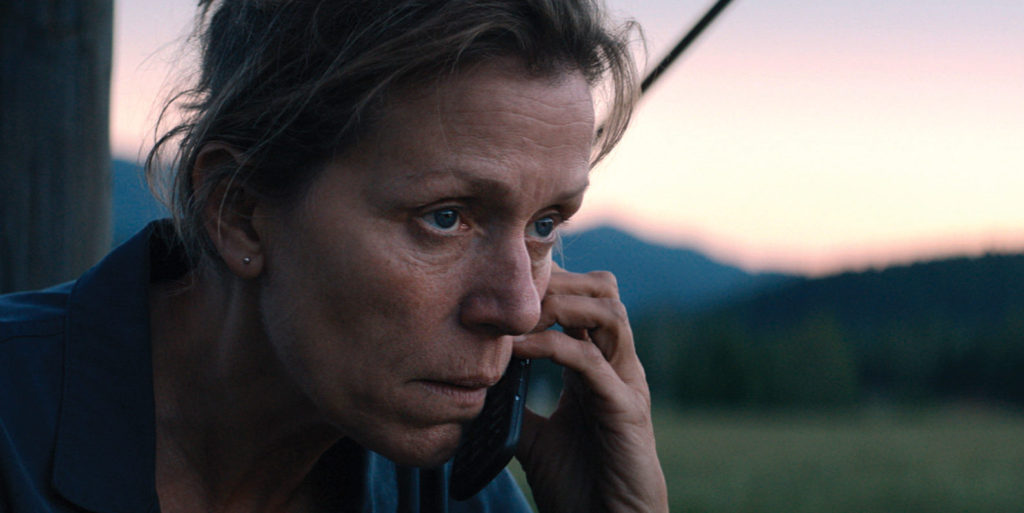
When I first saw Martin McDonagh’s controversial awards darling, I was instantly taken with it, so much to the point that I had overlooked some of its weaknesses. Indeed, what sort of police department would allow someone, regardless of race or gender, to burn down their headquarters? That there is no reprisal or reckoning for the seemingly unquenchable rage fueling Mildred Hayes (Frances McDormand in one of the most justly praised performances of her career) may seem one step too far into the fantastic, particularly in a film that struggles to contend with a myriad of very real issues in this country that have returned to the forefront of national conversation. But when I think back on the film, I remember the moment when the notorious ex-cop Dixon (Sam Rockwell), seemingly on a lead to find her daughter’s killer, calls Mildred to say that they have reached a dead end once again. Her face is buried in her one hand as the other quietly, persistently raps against her skull. There are furies and sorrows, personal and more broadly painted, that can never be resolved. That doesn’t mean the pursuit of bettering ourselves should be discounted. On the contrary, what Three Billboards Outside Ebbing, Missouri conveyed, for me at least, was a prickly and blackly comic exploration of how it’s characters all have the capacity to be better or worse people. No one can or should remain ossified by others or themselves. But lord is it hard, especially when the option of burning our bridges seems more and more each day like the only thing that can make a difference. That persistent rage, so emblematic of our moment, is what McDonagh’s film presents with messy yet wholly unforgettable aplomb.
7. The Lost City of Z
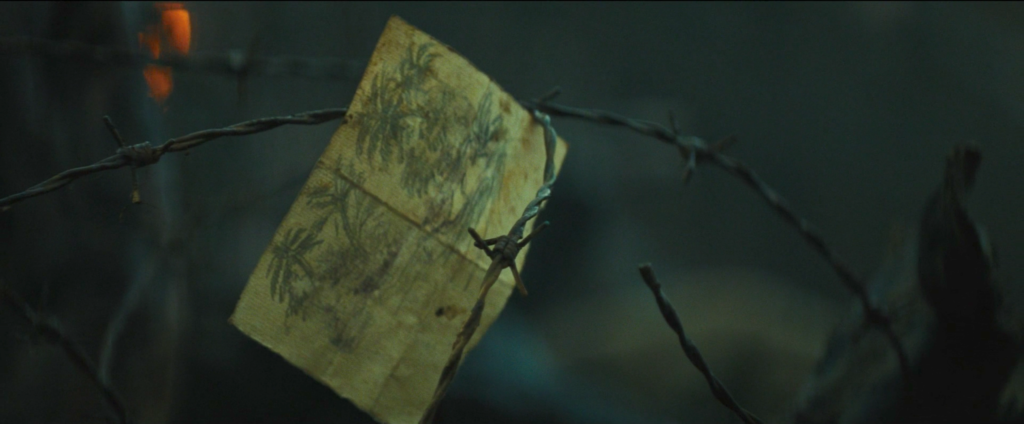
One of the peculiar qualities that distinguishes James Grey from his contemporaries is his embrace of bygone cinematic flourishes with a complete lack of smug self-awareness. His newest film, The Lost City of Z, is no exception in its evocation of a period in American filmmaking where the Adventure film served less to provide escapism than to deconstruct what escapism has to offer us. Curiously enough, this makes the film a unique companion piece to the summer’s biggest success Wonder Woman, particularly in the way both films intersect stabs of heroism in the carnal brutality of the First World War. Yet where Patty Jenkins’ film comes up short due to the demands of big-budget spectacle for pat resolutions, Grey’s recount of Percy Fawcett’s continuous search for what he deems to be a previously unknown civilization interrogates the rigidity of imperialism on not merely the colonized but those living within the purview of the hegemony. All the while, Darius Khondji’s transfixing 35mm photography floats through the impenetrable mystery of the jungle in relation to the “civilized” man. More than wish fulfillment or simple exoticism, The Lost City of Z extrapolates from Fawcett’s obsessive and, ultimately, doomed pursuit a yearning to transcend implacable institutions, to reject the perpetual social stratification and violent subjugation symptomatic of the western world. Then again, maybe he does find what he’s looking for. This enigma is preserved in a final shot that may not equal the ephemeral perfection of the closing image of The Immigrant, yet it nevertheless suggests a persistent hope for those who continue to dream beyond the confines of the waking world.
6. BPM
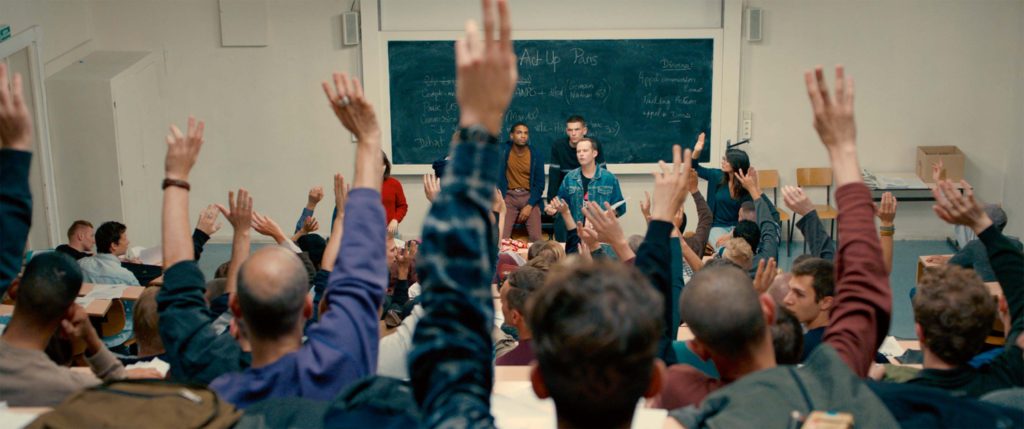
If history is told by the victors, then it is invariably a constant battle on the part of the disenfranchised to reject total eradication from a popular historical narrative. This is what makes a film like BPM (120 Beats per Minute) an invaluable work. What distinguishes Robin Campillo’s dramatization of the Parisian chapter of ACT UP in the early 1990s from biopics like, say, Philadelphia or Dallas Buyer’s Club is an immediacy strengthened by the experiences Campillo had as a member of the organization. His characters may be fictional, but so much of their dynamics, within and beyond the political spectrum, bear a verisimilitude that rightly serves to explicate the complicated process in which social change is enacted. All of which leads toward one of the most unbearably moving passages of any film this year. In lieu of well-worn sentimentality, the final sequences of BPM affirm the necessity of discourse, political or otherwise, if for nothing else than a forceful reminder that we are still alive in the midst of incontestable, relentless death.
5. Get Out
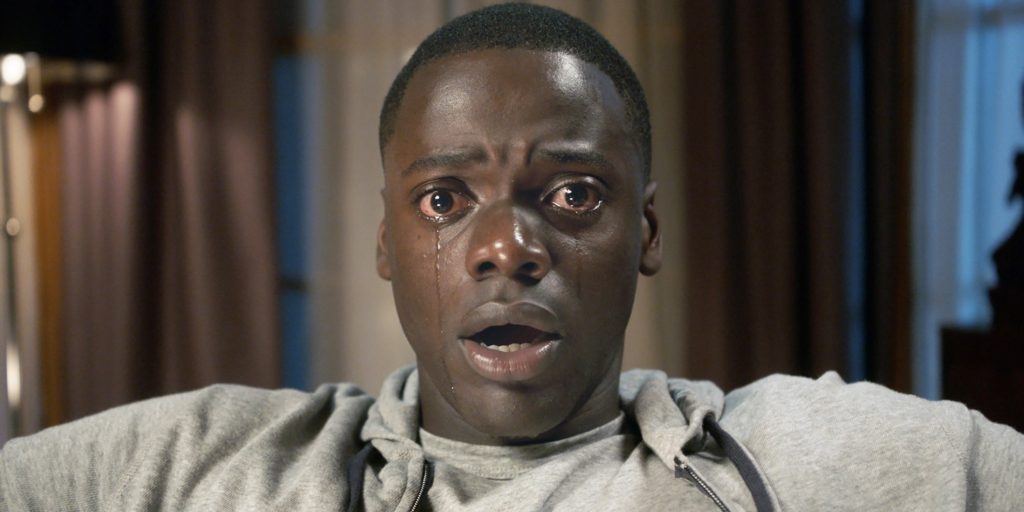
Very few films in 2017 filled me with such disparate mixtures of pleasure and dread like Jordan Peele’s Get Out did. As an exercise in genre filmmaking, Peele’s directorial debut is a miraculous burst of wicked creativity, a horror film in the vein of older staples like Seconds and Rosemary’s Baby. Peele embraces the mood and tempo of these classics while imbuing no small amount of savage satire into the proceedings. Unlike tongue-in-cheek fare like the Scream series, Get Out eschews skewering of genre trappings in favor of lambasting the affluent white demographic that has lulled itself into a sense of complacency. The tension builds with each successive set piece to a climax predicated upon the outlandish scenario Peele’s protagonist (Daniel Kaluuya) finds himself ensnared. Yet for all the extreme twists in the plot, the plight of Peele’s protagonist, the most compelling in an American horror film since Clarice Starling, is nothing if not deadly serious in the way he endeavors to reject the exploitation of black bodies through cathartic, swift violence. We as the audience are enthralled, left in bouts of gasps and nervous giggles, until a brutal stroke of genius brings us back to the reality of our irreconcilable racial relations in the final moments of the film. By giving his hero a happy ending, Peele reminds us of the privilege we have in watching a movie before dumping us back out of the theater into the harsh, unnerving light of day.
4. Faces Places
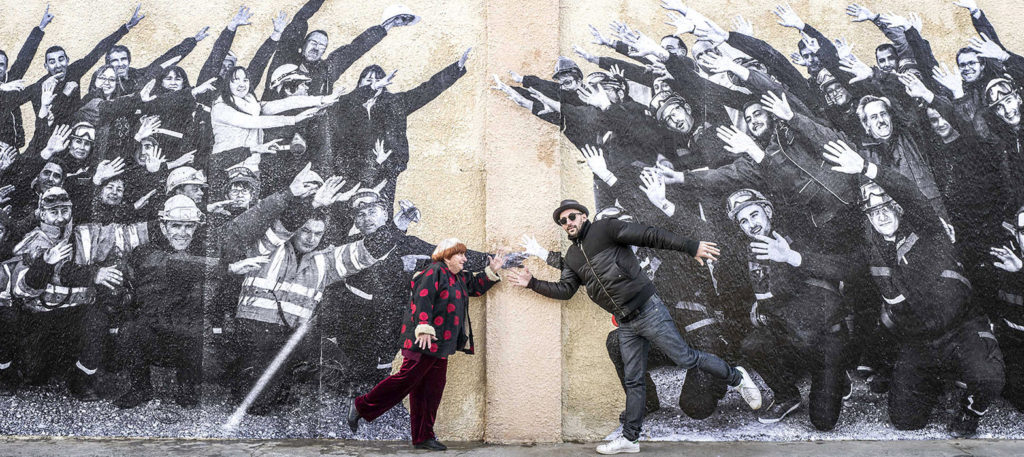
Having only recently accomplished the feat of being the oldest nominee for an Academy Award (by only eight days, in fact), Agnes Varda has left an indelible imprint on French cinema whose prolific output threatens to be overshadowed by her predominantly male peers of the Nouvelle Vague. Yet her newest film Faces, Places (Visages, Villages) is far from self-congratulatory. A chronicle of Varda’s journeys through France with the street photographer JR, the documentary presents a fruitful collaboration between the artists as they take it upon themselves to paste enlarged photographs of subjects, both human and animal, on specific edifices. In their travels and the choice of which subjects they present, Varda and JR probe different levels about the varying purposes of photography in a modern globalist Europe with an effortless effervescence. Some of the French denizens they photograph are beguiled by their likeness magnified to enormous proportions, while others are most certainly not. Yet the generosity of the film is apparent in its embrace of the agency those in front of the camera possess, almost more so than those behind. This dynamic culminates in a planned encounter with Varda’s old friend Jean-Luc Godard that I won’t spoil but can say bears no small measure of emotional devastation. Indeed, it’s telling that one of the photographs she and JR pick, which was taken by Varda early in her career, is placed on a rock along the beach and is carried away by the tide within a day. The ephemeral quality of capturing a moment, an idea, a truth through the photographic (and by extension, cinematic) apparatus is averred in deeply personal terms by two artists who span generations yet whose admiration for each other knows no limits.
3. A Quiet Passion
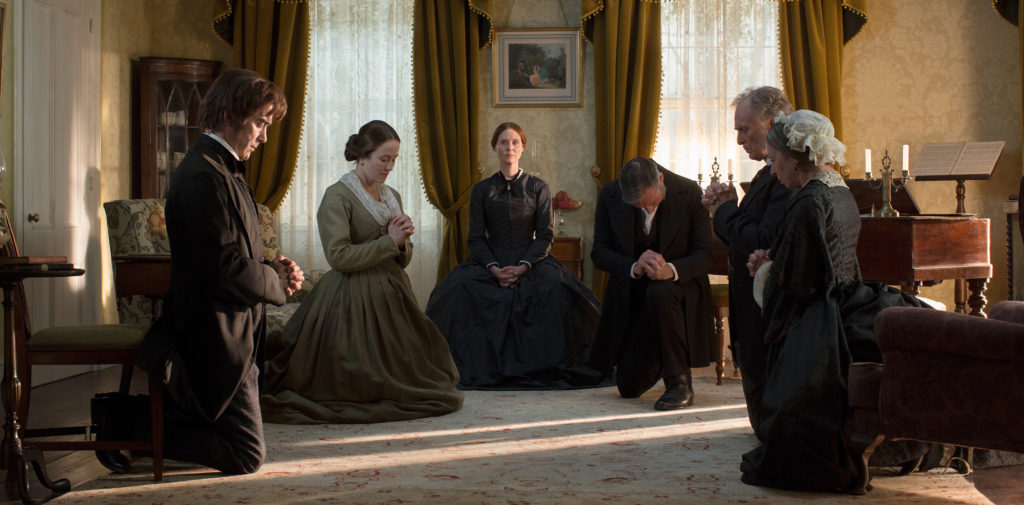
In the litany of American myths, we tend to reduce historical persons to archetypal status based upon their ultimate legacy, and this is no truer than in the legend of Emily Dickinson. A stalwart standard for introverted lovers of poetry the last century and a half, it is telling that the version of Dickinson in Terence Davies’ A Quiet Passion would bristle at the thought of being folded to fit into a pat, tidy narrative. As played with extraordinary fervor by Cynthia Nixon, Dickinson is a fiercely intelligent woman who abhors the rigid constraints reiterated by patriarchal Puritanism. Indeed, Davies’ focus on her relationships with family and friends, primarily concentrated within the Dickinson home, captures the decaying rot such ideology bears on all of them while never diluting the mercurial temper or brusque bitterness of his chief figure. Though more than mere social didacticism, A Quiet Passion charts, with a keen ear for dialectical specificity, the ethereal passage of time that no art can overcome. And when death does come, it is only awkward, protracted, and absolute. That is the tragedy at the heart of who we understood Emily Dickinson to be. In his distinct, uncompromising fashion, Davies does what Malick accomplished with the legend of Pocahontas in The New World, complicating and enriching a seminal part of our national narrative in the guise of a filmic tone poem.
2. Phantom Thread
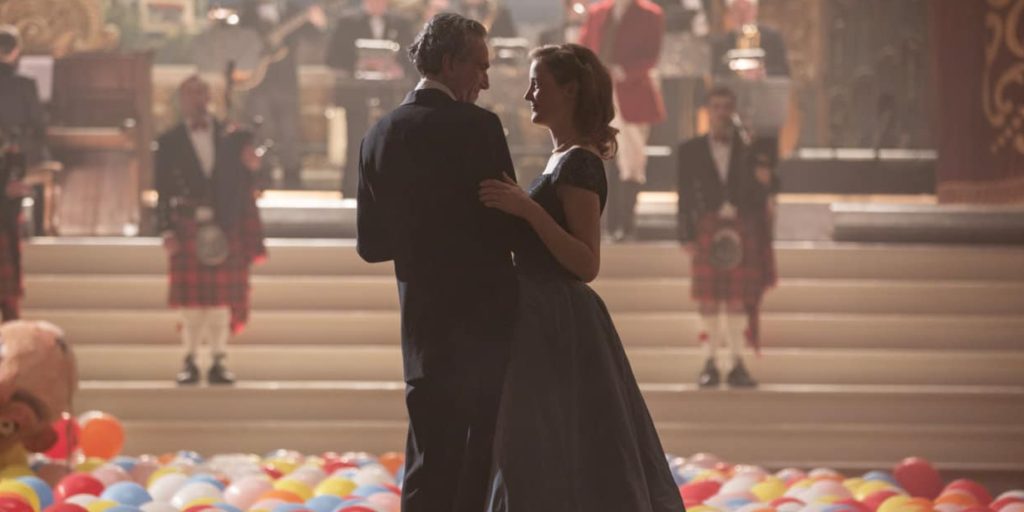
The governing force driving each and every character Paul Thomas Anderson has ever brought to the screen, from porn stars to oil tycoons, has been one of uninhibited yearning. Every other part of their lives may be strictly ingrained, either due to powers beyond their control or their own machinations, but their desire is rooted in an abiding wounded romanticism. Indeed, as the young Alma recounts of her strange relationship with the courtier Reynolds Woodcock, she gave him “everything he desires most… every piece of me.” But Anderson isn’t interested in glorifying the vanity and fussiness of an artist and the impact his life has on this woman. If anything, his film is just as much, if not more, intrigued by the ironclad resolution of this woman and the seismic shift it causes in his routine. More than in any other film he’s made, Anderson exalts the value of art as a salve against our own worst tendencies, that if it is to thrive then it must evolve, as must we as human beings. There are very few people I know who would go the lengths Alma and Reynolds do for each other, but I recognize a wealth of humanity in these characters that touched me as much as it unnerved me. Phantom Thread is a beguiling, haunting, and disarmingly funny love story between two unwavering people that is deeply strange and, in a perverse paradox, deceptively universal.
1. The Florida Project
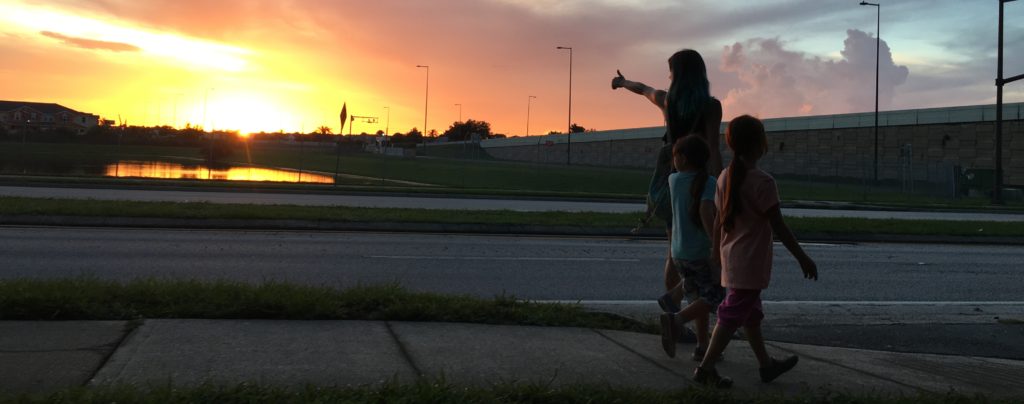
In a year riddled with broad, foolish actions that exacerbated the already vast gulf between the classes, of the brutal realities far too many women have been facing brought under constant media scrutiny, of corporations like Disney consolidating their niche in the marketplace with each new acquisition and franchise entry, no other film spoke of our plight with more immediacy than Sean Baker’s The Florida Project. Baker’s film is influenced by an enormous body of fiction, from Tom Sawyer to Terrence Malick, yet the miracle of The Florida Project is how it transcends the practice of pastiche to embrace sociological observation. The cruelty that too many Americans have faced, and for the foreseeable future will continue facing, is the persistent narrative that prides the individual over the community, that distinguishes us from them and consequently leaves so many in squalor and poverty. Baker, with a gentle flicker of radical anarchy, deconstructs these prevalent stereotypes with his cast of actors, some professional and others in their film debut. All of them exude a vivacious humor and spontaneity, in spite of the deliberate structure of the film’s plot, that exemplify the vibrancy and fundamental necessity of community, and how even that is being slowly stripped away. As a critic, I feel I have done this film a disservice in attempting to condense its power intoto broad generalizations, and indeed it is the specificity of The Florida Project that makes it unforgettable. Moonee, Bobby, Hailey, Jancie, Scooty; children and adults, they all feel achingly real. Which all the more feeds into the controversial final scene of the film, shot in a way that feels jarring in its contrast to the rest of the story. But Baker takes the dreams of escapism concocted by these children very seriously, and that only serves to reinforce the anger belying the mauve-tinted vision of the American nightmare on display. Above all, The Florida Project presents to us, the viewer, a way of life that is unsustainable. In these times when so many have chosen to batten down the hatches, distrust their neighbors, and despise the continued counterfeit policies proposed on a perpetual level by the most divisive and despised president in modern memory, a movie like The Florida Project is a galvanizing and moving reminder of who we must fight for. That, and for many reasons more, is why it is my favorite film of 2017.
Honorable Mentions::
Baby Driver
The Big Sick
Blade Runner: 2049
Call Me By Your Name
A Ghost Story
Good Time
The Meyerowitz Stories (New and Collected)
The Shape of Water
